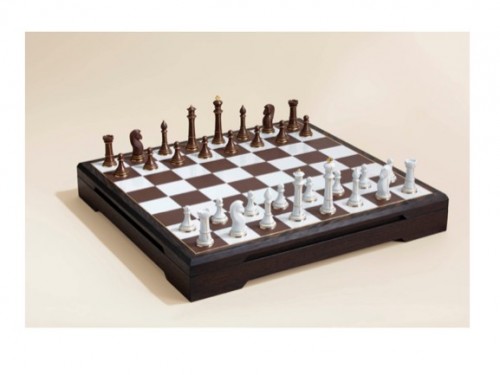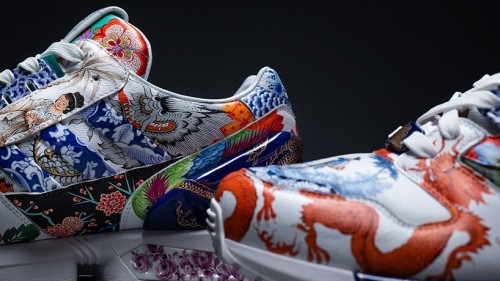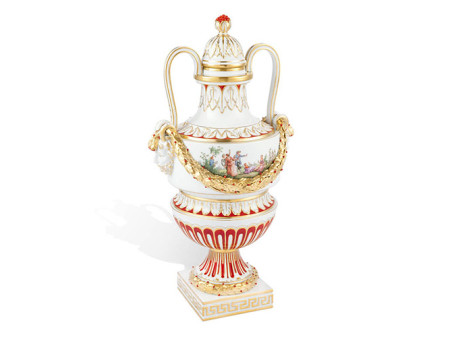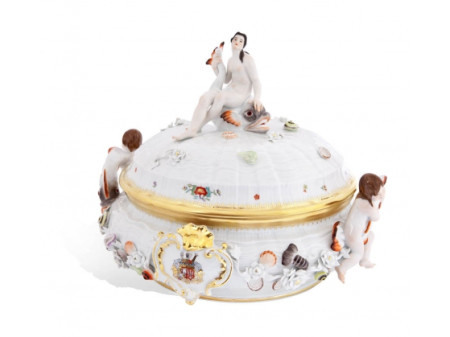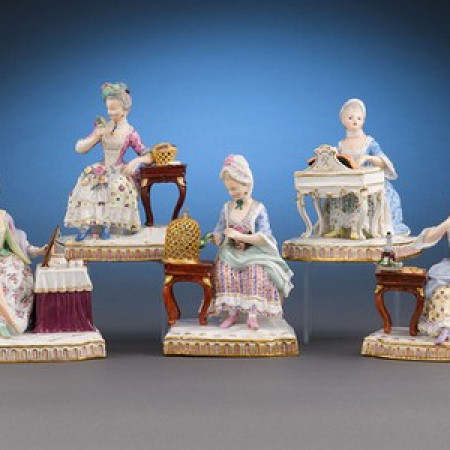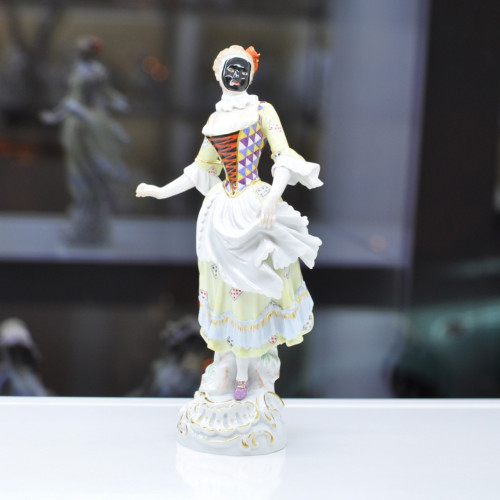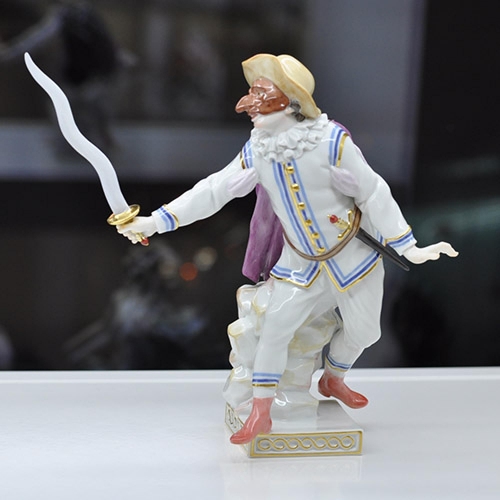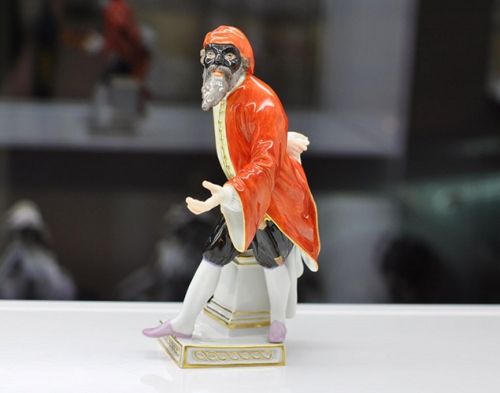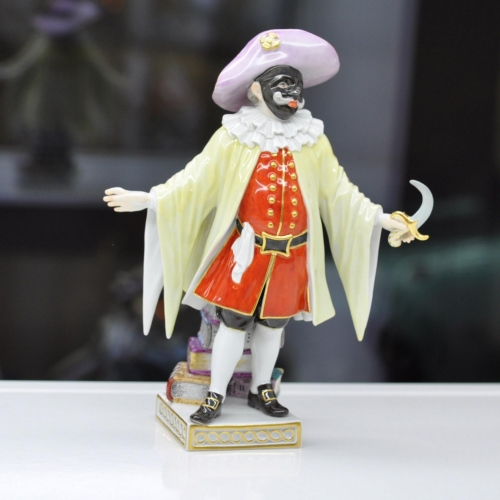Описания коллекций и фигурок Meissen
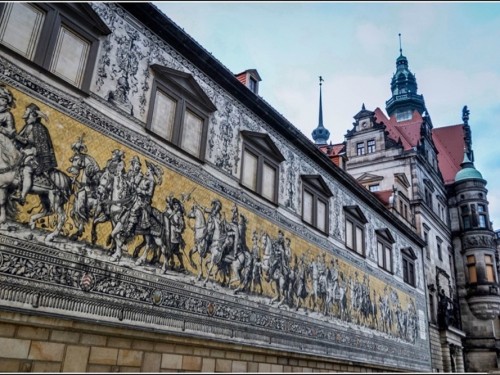
Особым типом художественного дизайна на мануфактуре Майсен считаются фрески – настенные картины одного сюжета, состоящие, как мозаика, из множества фарфоровых плиток, на каждой из которых выполнена роспись какой-то части из общего сюжета рисунка.

Мировая мифология драконов чрезвычайно богата, разнообразна и увлекательна. Во многих культурах драконы считаются божественными и мудрыми существами и обычно символизируют удачу, силу и процветание.
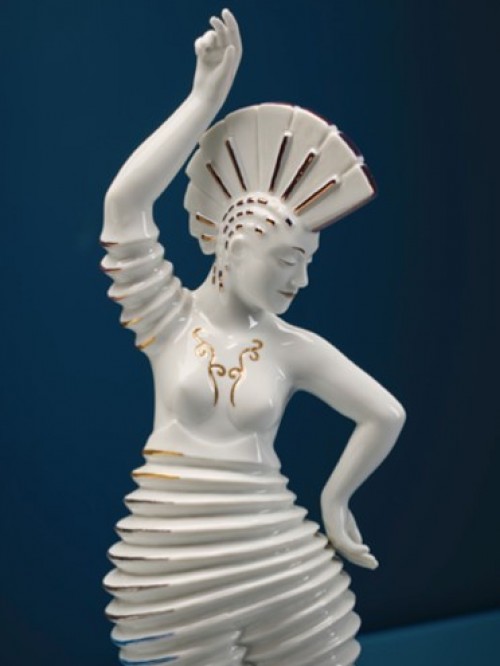
В истории Мейсенской мануфактуры многие авторы обращались к теме музыки, музыкантов и музыкальных оркестров. Эта новая серия из шести фигур «Orchestra Kuriosum» современного скульптора Марии Вальтер снова переносит нас в мир её мышления и памяти, ассоциаций и идей.
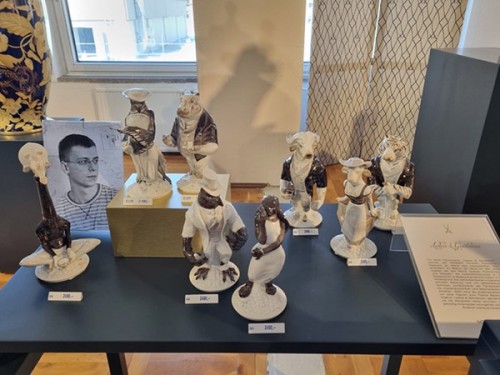
Прекрасная новость для коллекционеров! В продолжение прошлогодней успешной серии скульптора Максимилиана Хагштотц в 2023 году вышло ещё 2 фигурки в рамках коллекции «Ladies & Gentlemen». Теперь таких фигур 8.
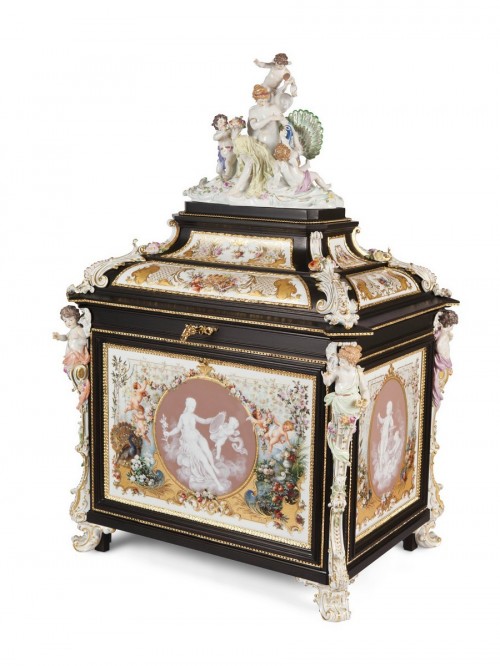
Этот потрясающий сундук для драгоценностей был впервые представлен мануфактурой Майсен на Всемирной выставке в Чикаго в 1893 году среди достаточно большого количества других уникальных работ. Своим роскошным видом и богатством декора, ослепительным мастерством, непревзойдённой техникой исполнения, многообразием деталей, своей неповторимостью и грандиозностью он незабываемо поразил публику, которая смогла посетить выставку.

Известная и очень занимательная ЛЕГЕНДА О СВ.ГУБЕРТЕ имела в своё время отражение в фарфоровом искусстве мануфактуры Meissen.
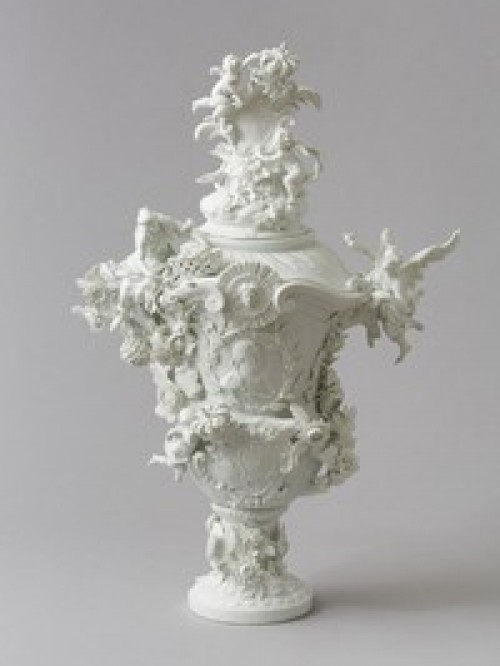
Курфюрст Август Саксонский нуждался в помощи французского короля Людовика XV и поэтому хотел сделать ему особый дипломатический подарок. По его заказу главный скульптор мануфактуры Meissen того времени Иоганн Иоахим Кендлер создал набор из пяти ваз.

В продолжение темы современного общества и нравов, Мария Вальтер представила в 20233-2023 году 2 фигуры обезьяны, своеобразный дуэт: King Dump и Miss Dress. В зависимости от того, как мы произносим и как мы пишем эти имена, их значение приобретает различные оттенки смысла.
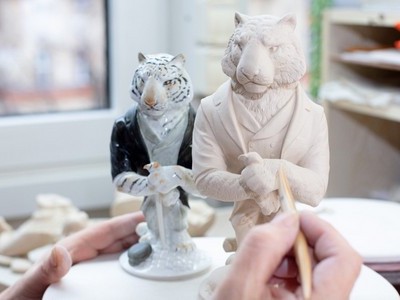
Новая серия Максимилиана Хагштотц, представленная на Вернисаже коллекции 2022-2023 года, называется «Леди и Джентльмены».
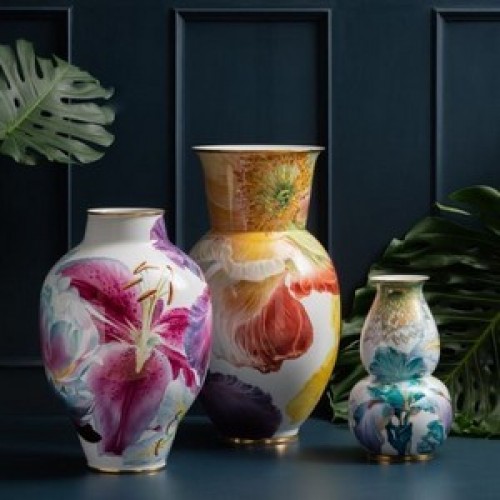
Каждый год особым отделом мануфактуры Meissen при помощи самых осведомлённых специалистов в области истории развития Майсенского искусства отбирается коллекция «Limited Masterworks», которая представляет собой переиздания работ великих мастеров мануфактуры и новые интерпретации исторических произведений.
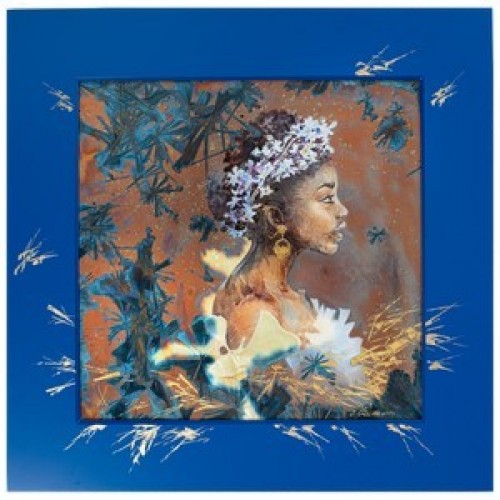
Meissen – это не только классика и традиции, Meissen – это постоянное стремление удивить, поразить, порадовать, открыть что-то новое и создать неповторимое. Так, например, её мастерами была создана скульптура в человеческий рост «Саксония», или некоторые вазы высотой более метра, что никто не осмелился сделать до них.

Лебединый сервиз - самый грандиозный проект мануфактуры Майсен.
В 18-ом столетии между в 1736-1742 годах на Майсенской Фарфоровой мануфактуре был создан один из самых больших сервизов в истории человечества. Он состоял из более, чем 2200 предметов, был рассчитан на приём из 100 человек

Среди изделий Майсенской мануфактуры, которые вошли в лимитированную коллекцию 2019-2020 на Вернисаже в сентябре, было представлено несколько предметов с оригинальной, выдержанной в определенном стиле классического авангарда, росписью.
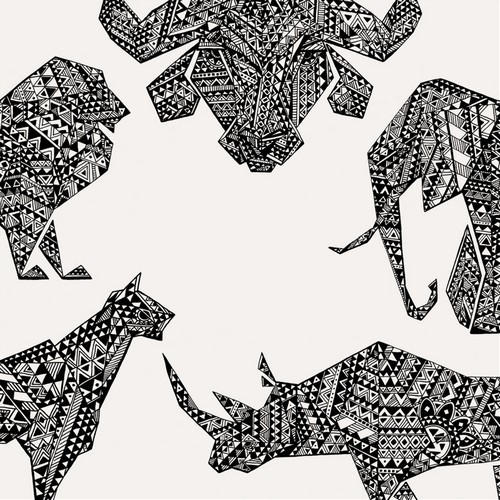
К праздничному сезону, BOSS и Meissen представляют результат своего новаторского сотрудничества, которое впервые объединило два всемирно признанных немецких бренда.
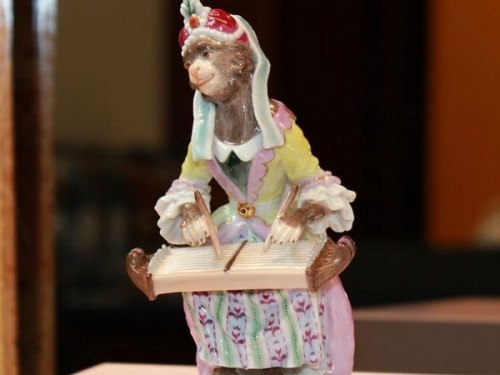
23-ья коллекционная фигурка «Обезьянка с цитрой» в рамках знаменитого «Обезьяньего Оркестра» впервые вышла в свет!
Она создана в 2019 году современным скульптором на основе зарисовок великого Кендлера. Создание фигурки приурочено к 310-летнему юбилею мануфактуры Майсен, который будет отмечаться в 2020 году.
Лимит 23-ей обезьянки ограничен 310 изделиями!
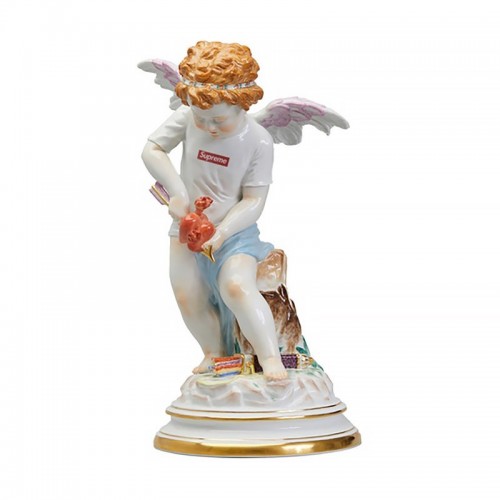
Старейшая европейская фарфоровая мануфактура объединила свои усилия с американским брендом одежды для скейтбординга «Supreme» в рамках их новой коллекции весна/лето 2019. Результатом этого сотрудничества стала лимитированная статуэтка «Купидона», одетого в спортивную футболку с логотипом культового модного бренда, и пронзающего стрелой два сердца.

В 2019 году MEISSEN отдаёт дань традиционному жанру росписи птиц на фарфоре, сохраняя таким образом наследие одного из самых успешных мотивов в фарфоровой живописи дизайна более чем 300-летней истории мануфактуры. В рамках продолжающегося художественного диалога с богатой историей мануфактуры, мастера художественного отдела пересматривают классические образы декорирования фарфора и применяют их как на современных, так и на исторических формах сервизов и скульптурной пластики, чтобы создать новые реинтерпретации.

Johann Joachim Kaendler used the story of a trainer, who after great difficulty was able to present a band of monkeys to the audience. These monkeys were behaved like humans, played musical instruments, and were dressed up in beautiful coats and clothes that were fashionable at that time. However, this deception was uncovered and the 'artists' showed who they really were. This story was written by the famous Saxon satirist Gottlieb Wilhelm Rabener (1713-1771) in the year 1745.

This figurine was created on the basis of the famous painting “The Chocolate Girl” (La Belle Chocolatière) by the Swiss 18th century painter Jean-Etienne Liotard (1702-1789). It was painted in 1744 to early 1745 in Vienna and is kept in the Old Masters Picture Gallery (Gemäldegalerie Alte Meister) in Dresden.

The "Monkey Orchestra" is a collection of amusing monkey-musician figures, dressed in the fashion of the time in the Rococo style, playing various instruments and singing under the baton. Male figures are depicted as musicians and women as singers. The grotesque character of the figures is emphasized by the trendy jackets, shoes, lace, panties, grimaces and poses of the "musicians." The realistic poses, the dynamics of movement, the design of the smallest detail in the costumes and images that seem to enliven musicians are all characteristic features of these figures.
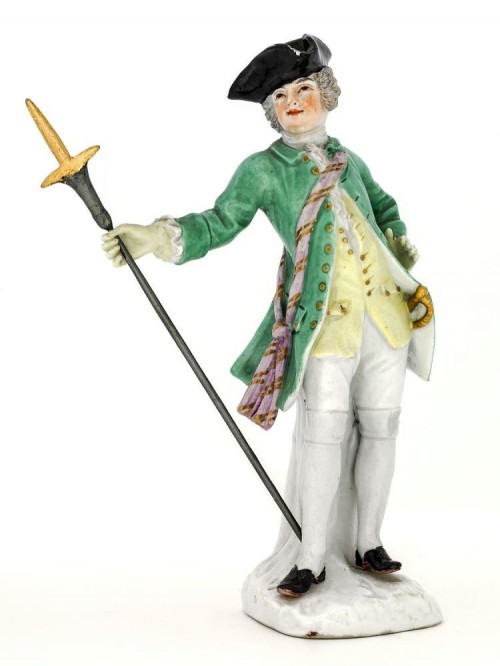
Первые миниатюрные фигурки, изображающие воинов, появились еще в Древнем Египте, Древнем Риме и Греции. Они изготавливались из дерева, камня, бронзы или глины. Их назначение скорее было не игровым, а ритуальным. Маленькие фигурки воинов помещались прямо в гробницы вместе с усопшими.

Новое издание знаменитой серии фигурок «Обезьяньего Оркестра» является неожиданным сюрпризом для почитателей MEISSEN. Впервые образцы декоров наследия MEISSEN были применены к фигуркам периода 18-го века. Такая необычная идея пришла в голову Лондонскому дизайнеру дома Asprey London во время посещения Саксонской фарфоровой мануфактуры. Художники MEISSEN работали в тесном сотрудничестве с дизайнером Asprey, в результате которого были отобраны 21 фигурка мартышек из Обезьяньего Оркестра и 21 декор из 6000 возможных вариантов, когда-либо разработанных на мануфактуре. Они представляют собой путешествие во времени сквозь несколько стилистических эпох и более чем 300-летнюю историю Майсенского Фарфора.

В рамках нового проекта Meissen, посвящённого теме кошек, представляем Вашему вниманию первого домашнего питомца из фарфора, расписанного как обычно по традициям ручного производства. Модельер Maximilian Hagstotz, работающий над созданием фигурки, имеет невероятный художественный талант. Он является одним из любимых учеников мастер-класса специализированной студии Йорга Даниэльчика.
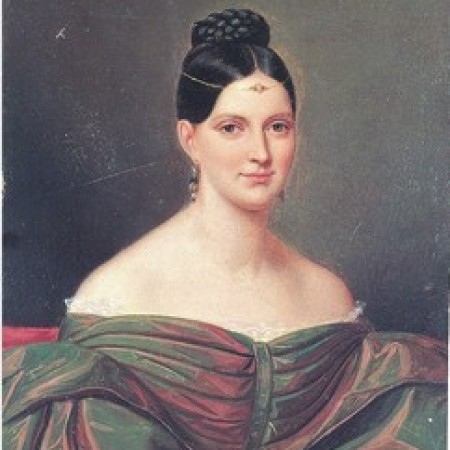
Фанни Эльслер – по праву считается самой знаменитой балериной 19-ого века, чьи танцы приводили зрителей в неописуемый восторг.
Она танцевала, как вспоминал французский писатель и большой знаток балета Теофиль Готье, «всем телом от кончиков волос до кончиков пальцев». У её ног была вся Европа.
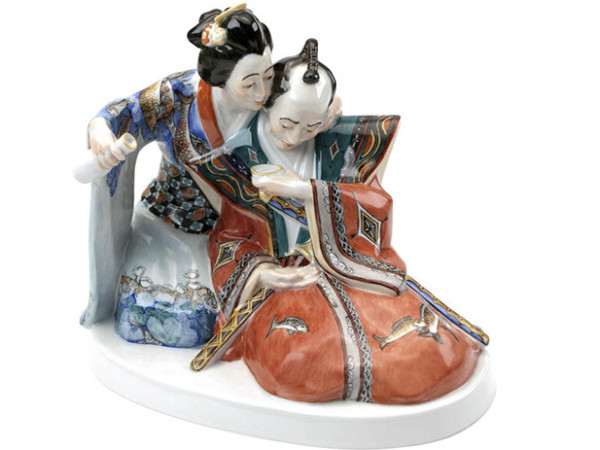
Альфред Отто Кёниг (1871-1940), один из ведущих модельеров-скульпторов малоформатных фарфоровых работ в стиле арт-нуво начала 20-ого века, был очарован эстетической красотой и значением чайного обряда с присущими Востоку неторопливостью и спокойствием, которые он и изобразил в фарфоре в рассматриваемой нами композиции.

Одной из самых больших гордостей мануфактуры Мейсен является коллекция фарфоровых скульптур животных и птиц в натуральную величину, которая была заказана Августом Сильным для Японского Дворца в Дрездене. Фарфор очень капризный и сложный материал. Крупные изделия такого масштаба практически ни одной мануфактуре изготовить не удаётся и по сей день. Что уж говорить про начало 18-ого века, когда про фарфор и рецептуру красок было известно ещё так мало. Заказ стал определенным вызовом для мастеров мануфактуры. Выполненные фигуры, часть которых мы и сегодня можем видеть на экспозиции в Дрездене, демонстрируют все сложности, с которыми столкнулись мастера в течение производственного процесса и служат неоспоримым доказательством невероятных достижений в работе с фарфором.

Изображение сцен из светской жизни стало одной из самых важных тем в скульптуре стиля Барокко. Погрузитесь в мир изящества и элегантности.

The Commedia dell'Arte is one of the main collections of the Meissen manufacture. The figurines in masks shine in perfection and humor and the dynamics of their moves was transferred into sculptures by great artists, using bright colors and fine details. Treat yourself to the charm of the Italian Commedia dell’Arte, surprisingly accurately crafted by masters of their craft.

"The Good Mother" is a very interesting piece of work of the Meissen manufactory in Rococo-style, which takes us back to the fine art of the 18th century, and especially to the pictures of Johann Eleazar Zeissig, a famous German artist. Schenau was his nickname, which he invented himself after the city where he was born.

As with many creations of Scheurich, this clock was not immediately conceived in porcelain. The famous painter and sculptor started making sketches of figures of children in large quantities already before 1915.
The first version of this clock was made in bronze in 1916, although the order of the owner of the magazine "German art and scenery", who obtained the drawings of the sculptor, provided the production to be in porcelain.

The porcelain clocks from the Meissen manufactory provide you with unique moments to enjoy the sense of time, which flows seamlessly into minutes of unforgettable delight, admiration, fun. Meissen porcelain clock manufactory provide you with unique moments to enjoy the sense of time, which flows seamlessly into an unforgettable minutes of delight, admiration, fun. These watches are designed not only to simply decorate the house, but also help to grasp the nature of time in allegorical images, significantly expanding its concept.

Throughout his professional career, Paul Scheurich turned to the subject of time. He actually creates the feeling that next to the clock dial he set figurines that seem to try to stop time, frozen in the languid and relaxing stay. This watch "Hunter with dog" is no exception: we see a gorgeous lady who is resting her elbows on the imposingly round sphere hours after hunting and strokes her dog. Time becomes a subservient concept; it can be stopped.

This figure represents an allegory of Asia, one of the continents. Since ancient times, the Old World was divided into three continents: Asia, Africa and Europe. The southern transatlantic continent, discovered by the Portuguese in the first decade of the 16th century (1500-1502), become known as The New World or as America.

Kaendler took portraitist Georg Christoph Grooth’s 1743 painting “Portrait of Elisabeth Petrovna on a horse with a black boy” which now adorns the Tretyakov Gallery as a basis for the figure. Elizabeth's reign can be characterized by two important factors: abolition of death penalty and a relatively peaceful reign, as there were almost no wars under the rule of Elisabeth.

Eusebius is one of the figurines of Paul Scheurich's collection dedicated to Sergei Diaghilev's 'Ballets Russes'. The sculptor took Mikhail Fokina's "Carnival" based on the musical work of Robert Schumann as a basis. Eusebius is not a central character in the work of the choreographer.

The clever, quirky but often eccentric Pedrolino from the Italian commedia dell'arte actually served as a prototype for Pierrot. In the early 19th century, the French redefined the image of Pedrolino and created Pierrot, the image of an unfortunate rejected lover, of an unfortunate companion and of the rival of Harlequin. He was an emotionally thin and extremely vulnerable character. The person playing the character of Pierrot always performed unmasked. It is believed that the servant Pierrot used to be a miller before, who was dressed white clothes and who always had flour in his face and painted tears. Therefore, he did not need a mask.

Looking at this collection of childhood memories of Julius Konrad Hentschel, you will plunge back into the world of your childhood. You may even get a different look at your own children. For sure, you will give your child at least one smile more.

Just like any royal, Elector of Saxony Augustus had a huge number of people at his service. At his court, he also had his personal tailor, who received special honor for his excellent work. He commissioned the sculptor Johann Joachim Kaendler sculptor to manufacture a caricature figure in large size in porcelain, which had to portray a goat with on the royal tailor sitting on top of it.

The theme of time is widely used in the works of sculptors at the Meissen manufactory. Clocks, as an integral part of any interior decoration, as a necessary attribute of comfort at home, are presented in a wide assortment of the porcelain wealth of the factory. You can find wall and table clocks, decorated with flowers, birds or cupids.
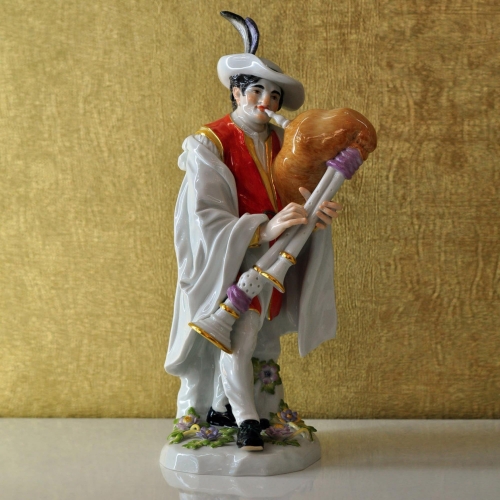
The bagpipe is an ancient wind instrument, which is a bag made of thin, soft skin, which on the one hand is fixed to tube with holes to play melodies, and on the other to a short tube for blowing air. Historical evidence stipulates that bagpipes were used in Rome as early as the first century AD, because the infamous Emperor Nero allegedly played this instrument. As the bagpipe was brought to the British Isles by the Romans, Scotland is mistakenly called the birthplace of bagpipes.
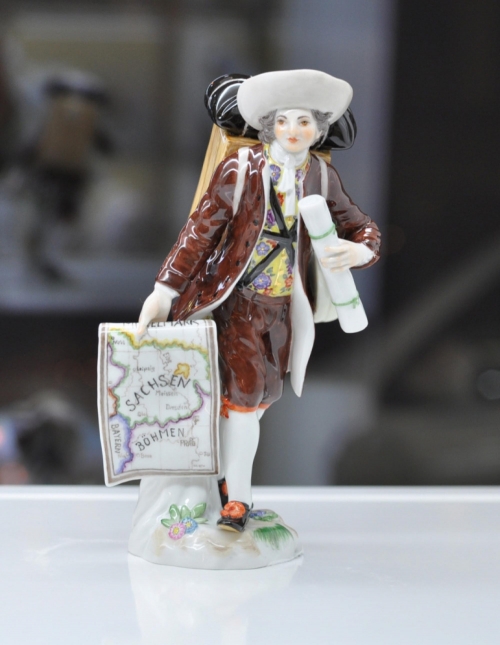
This charming young map seller belongs to the Meissen porcelain collection of the "Paris peddlers." The merchant is dressed according to the 18th century western European fashion in a French long coat, tight trousers and a bright contrasting vest. The travelling seller wears a large wooden box with drawers for paints and brushes on his back.

Only very little was known about such people like the Malabar in the 18th century. They were mentioned in only a few guidebooks of that time. Some theories suggest that the name of this nation comes from the Malayam word ‘mala’ meaning ‘hill’ and the Persian ‘bar’ meaning ‘kingdom’. (Malayam is one of the languages spoken in southwestern India.) A special feature of the Malabar people living on the Malabar coast, historically the southwestern area of the Indian subcontinent, was their extraordinary musicality.

Only very little was known about such people like the Malabar in the 18th century. They were mentioned in only a few guidebooks of that time. Some theories suggest that the name of this nation comes from the Malayam word ‘mala’ meaning ‘hill’ and the Persian ‘bar’ meaning ‘kingdom’. (Malayam is one of the languages spoken in southwestern India.) A special feature of the Malabar people living on the Malabar coast, historically the southwestern area of the Indian subcontinent, was their extraordinary musicality.

К празднику Рождества Христова наш Салон предлагает Вам отличный подарок – это набор трех лимитированных канделябров, модели которых были созданы в 1903 году Эрихом Кляйнхемпелем (Erich Kleinhempel) в типичном для того времени стиле Югендстиля, который актуален и концептуален и по сей день.

Образ лошади всегда и всех завораживает своей грациозностью и статью.
В языке символов фигура лошади или коня ассоциируется с ощущениями неукротимой свободы, благородства, динамики движения и жизни.
Многие клиенты нашего Салона при оформлении интерьера ориентируются на принципы Фэн-Шуя. Наша администрация решила опубликовать некоторую информацию по просьбам наших покупателей относительно символа лошади и коня.

Так повелось, что чем миниатюрнее вещь, тем больше интереса она вызывает. Завораживает прежде всего, как возможно сделать руками столь маленький предмет. Кроме этого привлекательным становится то, что такие безделушки легко спрятать в карман, носить с собой. Некоторыми из них модно было украсить или сопроводить в качестве аксессуара любой наряд. И как правило, все они имели, какую-нибудь определенную практическую функцию. Шкатулки, корбочки для хранения всякой мелочевки, табакерки, курительные трубки, кольца и серьги, письменные принадлежности. Фарфор мануфактуры Meissen в своё время стал идеальным материалом для изготовления всех этих необходимых в жизни светского общества предметов. Он позволял выразить характер их владельцов, их вкус, образ жизни и мировоззрение. Такие фарфоровые безделушки изготалвивались в основном на заказ в личное пользование или на подарок по какому-либо важному случаю.

